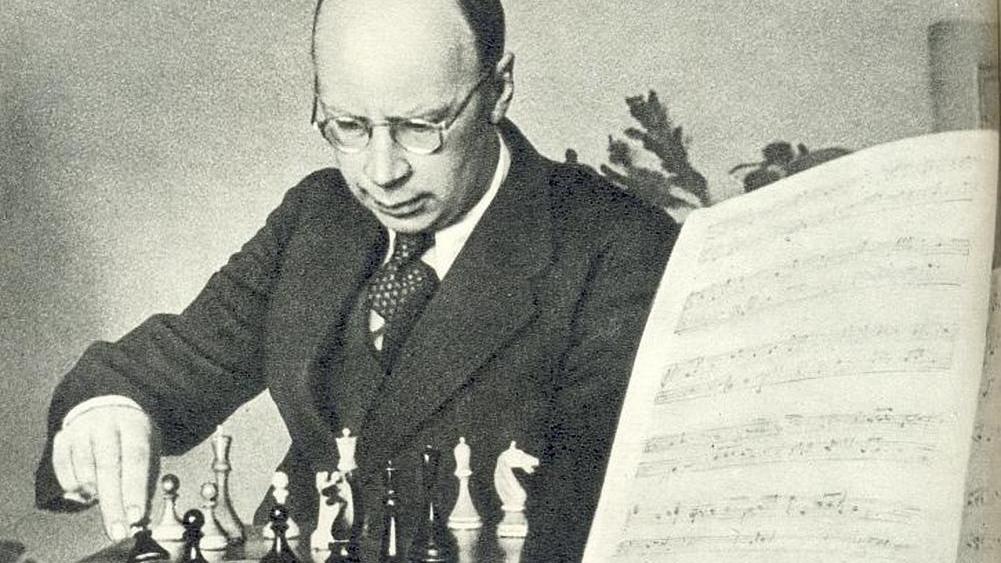The Sinfonia Concertante, Op. 125 (or Symphony-Concerto for Cello and Orchestra, as it is also known), was among the last orchestral works composed by Sergei Prokofiev. The dramatic, spirited musical hybrid was conceived at a time when Prokofiev faced declining health and professional adversity. In 1948, he was censured, along with other prominent composers, by the Central Committee of the Communist Party for writing music “marked with formalist perversions…alien to the Soviet people.” In a quirk of history, the news of Prokofiev’s death on March 5, 1953 was overshadowed by the death of Joseph Stalin an hour later.
The roots of the Sinfonia Concertante can be found in the seldom-performed Cello Concerto in E minor, Op. 58, which Prokofiev completed in 1938. The piece was attacked so viciously, especially by the apparatchik composer, Vladimir Zakharov, that Prokofiev withdrew the score. Nearly a decade later, the 20-year-old Mstislav Rostropovich miraculously acquired a copy of the score, and gave a performance at the Small Hall of the Moscow Conservatory. Prokofiev, who was in attendance, promised to revise the Concerto for the young cellist. The collaboration, which lasted until the composer’s death, proved to be fruitful, and included the Cello Sonata in C Major. The revision of the initial Concerto was so extensive that, at first, it became Cello Concerto No. 2. Following yet another revision, the work was reborn as a formal hybrid, bearing the title, Sinfonia Concertante. Prokofiev did not live to hear it performed in its final form. Rostropovich gave the posthumous premiere in Copenhagen in 1954.
Far from the lightness and intimacy of Mozart’s famous piece of the same name, Prokofiev’s Sinfonia Concertante is filled with expansive, symphonic drama and sweeping melodies. The solo cello becomes a blazing protagonist which engages in conversation with a cast of colorful and quirky orchestral “characters.” The three movements unfold with a moment-to-moment fluidity which evokes the drama of a ballet score.
The first movement (Andante) begins with the same staccato rising five-note motif that we hear as a tense ostinato in Prokofiev’s ballet score for Romeo and Juliet. (specifically, No. 47, “Juliet Alone”) Here, the motif ushers in a quirky, vigorous march. The cello sings a passionate, seemingly unending statement filled with sudden shifts in key. A mysterious new theme emerges in which a haunting bass line ascends, moving in contrary motion to a shivering descending line in the high strings.
The second movement (Allegro giusto) is the work’s longest. It encompasses a brilliant, virtuosic scherzo, a shimmering and lushly romantic theme evocative of Romeo and Juliet, an extended solo cello cadenza, a mechanical allusion to Stravinsky’s Petrushka, and colorful, comic echoes of Peter and the Wolf. Constantly in flux, the music unfolds with a dizzying sense of drama and adventure.
The final movement (Andante con moto – Allegretto – Allegro marcato) opens with an E major chord which seems to have wandered out of a Beethoven score. The solo cello introduces a melody which resembles a folksong, and soon a set of variations blossoms. Along the way, the folksong morphs into a sardonic quote of a drinking song by Zakharov titled, Bud’te zdorovy, zhivite bogato (“Be healthy, live richly”). It is a clownish romp which seems to mercilessly mock the socialist realism of the establishment composer who was awarded three Stalin Prizes. Near the end of the movement, the solo cello enters into a serene, dreamy duet with the celesta. In the final moments, the cellist enters the extreme upper range of the instrument, extending off the fingerboard. Rostropovich likened this concluding flourish to “spiraling up to the very summit of a domed roof.”
I. Andante:
II. Allegro giusto:
III. Andante con moto:
Five Great Recordings
- Prokofiev: Symphony-Concerto for Cello and Orchestra, Op. 125, Mischa Maisky, Mikhail Pletnev, Russian National Orchestra Amazon
- Mitislav Rostropovich with Sir Malcolm Sargent, and the Royal Philharmonic Orchestra (1957 recording)
- Yo-Yo Ma with Lorin Maazel, and the Pittsburgh Symphony Orchestra
- János Starker with Ernest Bour and the SWR Sinfonieorchester Baden-Baden und Freiburg
- Gautier Capuçon with Valery Gergiev and the Mariinsky Theatre Orchestra, St Petersburg


Thank you for highlighting this tragically underappreciated piece; great write-up! I return to this piece so often, lately moreso with Zuill Bailey; feeling the same intrigue, wonderment each time. Prokofiev continually reminds us, it’s ok to just be you. I hold out hope; to see this in a live performance…someday.
Very good!
Watching it now live on the Berlin Philharmonic Digital Hall, with Alisa Weilerstein, Lahav Shani conducting. I’ve heard that Schoenberg’s cello concerto is more difficult (haven’t heard it), but this must be one of the most demanding in the literature. A fantastic and passionate performance by Weilerstein, with Prokofiev’s signature and unique mixture of lyricism, modernism and technical fireworks, not to mention his irony, humor and mocking of the Union of Soviet Composers critiques of his works. Watching Alisa’s expressive face in live performance is an additional treat.